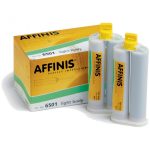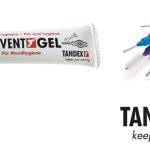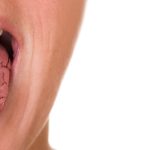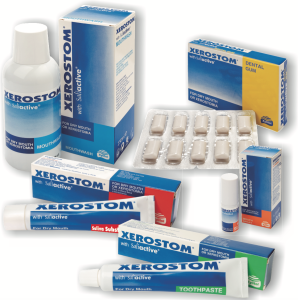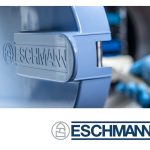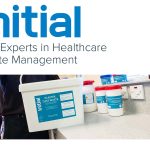Advances in impression materials take dental mould accuracy to a new level
Advances in flexible and elastomeric dental impression materials have revolutionised the field of dentistry in recent years. These materials have become increasingly popular due to their ability to capture accurate and detailed tooth and gum impressions, leading to improved patient outcomes and greater comfort during the dental impression process.
Traditional dental impression materials, such as alginate[i] and silicone, have long been used in dentistry to create moulds of the teeth and surrounding tissues.[ii] However, these materials often lack flexibility and elasticity, making it difficult to accurately capture the complex contours of the oral cavity. Furthermore, they can cause discomfort and gagging sensations in patients, leading to an unpleasant dental experience.[iii]
Flexible and elastomeric dental impression materials offer a solution to these limitations. These materials are typically made from a combination of silicone, polyether, and other polymers that provide high elasticity and flexibility. This allows them to easily adapt to the oral tissues, capturing precise impressions even in hard-to-reach areas.
One of the key advancements in flexible and elastomeric dental impression materials is the development of improved viscosity control. In the past, some flexible materials were too runny, causing them to flow excessively and compromise the accuracy of the impression.i Today, manufacturers have optimised the viscosity of these materials, allowing for better flow control and reduced slump during the impression-taking process. This ensures that the material stays in place and accurately captures the desired impression.
Another important advancement is the introduction of new materials with enhanced tear strength.[iv] Tear strength refers to the resistance of the material to tearing when removing it from the mouth. In the past, some flexible materials would tear easily, necessitating costly and time-consuming re-impressions. However, modern elastomeric materials have been designed with improved tear strength, reducing the need for re-impressions and improving the overall efficiency of the dental procedure.
Flexible and elastomeric dental impression materials now come in a variety of viscosities, allowing dentists to choose the most suitable consistency for each specific dental procedure. For example, a lower viscosity material may be used for capturing fine details, while a higher viscosity material may be preferred for creating impression trays. This versatility provides dental professionals with greater control and precision in their practice.
In addition to improved performance, flexible and elastomeric dental impression materials have also enhanced patient comfort. The elasticity and flexibility of these materials allow for easier removal from the mouth, minimising the risk of discomfort and gag reflex. Patients no longer have to endure the discomfort associated with traditional impression materials, making the entire dental experience more pleasant and less anxiety-inducing. Indeed, despite the industry noise around the advent of digital scans, one study found that there was no statistical difference between the two impression techniques (digital vs conventional) in terms of time or with regard to patient anxiety levels.[v]
The flexibility of these materials also allows for easier pouring of dental gypsum or other materials into the impressions. The flexible material can be gently manipulated to facilitate the pouring process, resulting in more accurate and well-fitting dental restorations.
AFFINIS™ is a silicone-based impression material from COLTENE. AFFINIS™ wash materials wet the tooth and gingiva extremely quickly and effectively. Its distinct surface affinity and flowability virtually eliminates the risk of air voids and distortions. With the AFFINIS™ product range, dental professionals are well prepared for any patient situation, no matter how complex.
Advances in flexible and elastomeric dental impression materials have transformed the field of dentistry. These materials offer improved accuracy, tear strength, and comfort, leading to better patient outcomes and overall satisfaction. Dentists now have more control and precision in their practice, while patients can experience a more pleasant and comfortable dental visit. Material gains indeed!
For more information, info.uk@coltene.com and 0800 254 5115
COLTENE loyalty scheme https://rewards.coltene.com
[i] Nandini VV, Venkatesh KV, Nair KC. Alginate impressions: A practical perspective. J Conserv Dent. 2008 Jan;11(1):37-41. doi: 10.4103/0972-0707.43416. PMID: 20142882; PMCID: PMC2813082. [Accessed September 2023]
[ii] Gupta R, Brizuela M. Dental Impression Materials. [Updated 2023 Mar 19]. In: StatPearls [Internet]. Treasure Island (FL): StatPearls Publishing; 2023 Jan-. Available from: https://www.ncbi.nlm.nih.gov/books/NBK574496/ [Accessed September 2023]
[iii] Colvenkar S, Kalmath B, Cherukuri VP, Vanapalli J, Tirukovalur SV. A Simple Technique to Manage Gag Reflex. Cureus. 2023 Feb 24;15(2):e35403. doi: 10.7759/cureus.35403. PMID: 36987489; PMCID: PMC10040145.[Accessed September 2023]
[iv] Singer L, Bourauel C, Habib SI, Shalaby HE, Saniour SH. Tear strength and elastic recovery of new generation hybrid elastomeric impression material: A comparative study. BMC Res Notes. 2022 Jun 27;15(1):224. doi: 10.1186/s13104-022-06110-3. PMID: 35761301; PMCID: PMC9235106. [Accessed September 2023]
[v] Yilmaz H, Konca FA, Aydin MN. An Updated Comparison of Current Impression Techniques Regarding Time, Comfort, Anxiety, and Preference: A Randomized Crossover Trial. Turk J Orthod. 2021 Dec;34(4):227-233. doi: 10.5152/TurkJOrthod.2021.21025. PMID: 35110223; PMCID: PMC8939252. [Accessed September 2023]



